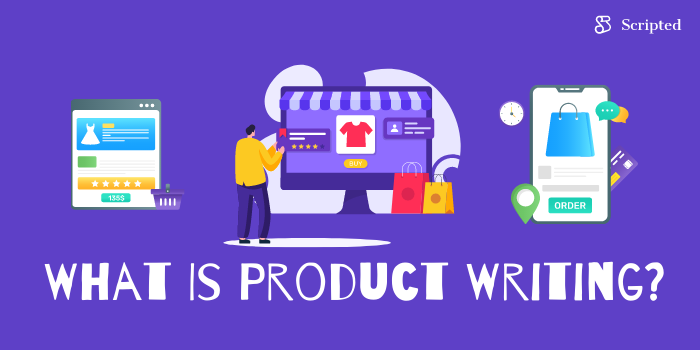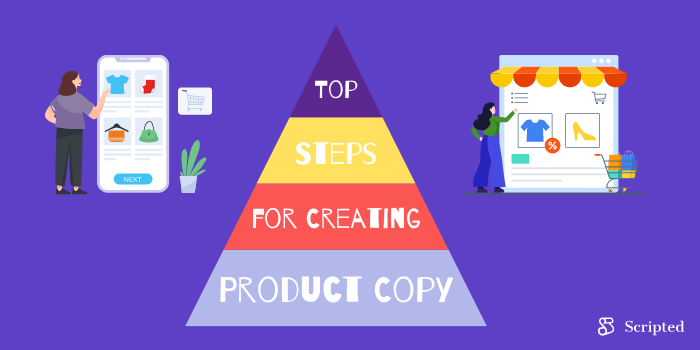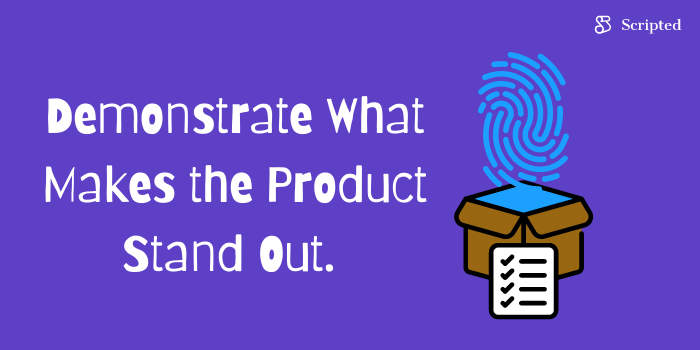Product Writing 101: What Every Scripted Writer Should Know

Writing is all about telling a story that’s compelling and alive with details. You’re giving your readers everything they need to move forward with the purchase, no matter what the product or service might be.
Writing about products just takes a slightly different mindset for most writers. You’re capturing the essence of a product, so it’s important to understand what the product is, what it’s used for, who the target audience is, and what the goal is. Here are a few writer tips to get you started.
What Is Product Writing?
Product writing allows a company to share the most important details of the product. With a particularly compelling write-up, your product content might be so compelling that your audience should feel like they can see and completely understanding what you’re selling, as well as the benefits and why they should buy it.
You should always keep the dual purpose of your writing in mind. You’re not only telling about a product in a compelling way. As a writer, you’re also considering why your audience would want to buy the product. Is it going to make their lives easier? Is it just a comfort item? Why should they feel compelled to connect with what you’re offering and maybe even buy the product?
Why Are Product Descriptions Important?
An estimated 87% of consumers say that the product content is so important that it influences their decision to buy, while 50% of buyers say that they returned a product when it did not match what was described in the product description.
Top Steps for Creating Product Copy
Your Product Description can have a range of other powerful benefits along the marketing and sales process. Here’s a step-by-step guide to working your way through your product writing process.
1) Perfect Your Call to Action! What are you asking your audience to do? Do you want them to buy a product, read a review, connect with you on social media, tell a friend, download a white paper, or glance through a product overview?
Your call to action is usually at the end of your content, whether it be an email, article, social media post, or other content; but you should consider it first. What’s the direction you need to take with your product content? How will you get there? What’s your roadmap?
2) Include Power Words. It’s also important to know (or have a sense) about which power words you will use to compel interest along the way as you work your way toward your Call to Action. Is your product Amazing? Efficient? State-of-the-Art? Special? Premium? Affordable? Effective? Revolutionary? Next Level? Luxury?
Not all of these power words will apply to your product, so keep a list of power words that most accurately describe your product. Use them as spice along the way, with overusing them or using them out of the correct context.
3) Demonstrate What Makes the Product Stand Out.
Your Product Description may be the first (and only) introduction to your product and your company. To deliver the most professional image, you must offer well-written and accurate descriptions.
You also should keep the needs of your customers in mind. This is your chance to demonstrate that you have carefully considered how your product will be of use to them.
4) Get Your SEO Results. Your carefully crafted product descriptions should include strategically placed keywords that will support your search engine optimization efforts. Beyond the obvious plagiarism implication of taking the content from another source without proper attribution, it’s just not a good idea to post any duplicate content on your site or in any of your marketing and sales materials. Google typically penalizes duplicate content, but it’s also just a poor experience for your audience.
5) Make It An Experience. Product Description and other related content are part of the complete experience that you’re developing for your audience. You should consider the high-quality graphics you use on your site and in your social media posts, as well as every aspect of your marketing and sales process/funnel.
Consider what will make your audience move forward to buy, shop, explore, read, or in other ways respond to the call-to-action that you’re targeting. What can you do to make their experience better, more straightforward, easier, or shorter?
6) Connect With Your Audience. Your content should capture the most accurate specifications and features of your products without relying on gobbledygook or tech jargon. Get to the point. Tell it like it is.
Let your audience decide whether your compelling details and the descriptive story that you tell about the product are enough to make them want to buy. You can connect with your audience with a simple approach without beating them over the head with a profusion of tech lingo.
7) Solve A Problem.
How does the product address or solve a problem that your audience has? It’s possible they don’t even know it’s a problem. That’s ok. It just means that you have to do a better job of not only explaining what the problem is but also helping your audience to understand and appreciate why the product is the perfect solution.
8) Get Feedback. The process of writing about products can be difficult because you may not really get a sense of what the product is about at first. It’s important to immerse yourself in the details of the product so you understand it and your audience as well as possible.
Then, you should connect with someone who knows the product better. You need another set of eyes to give you feedback on whether you’ve captured what the product is and what it does for the target audience.
Next Steps: Connect With a Scripted Social Media Writer
When you’re looking for clear and concise descriptive content about your products and services, you can rely on the Scripted team to deliver what you need in a timely manner, with an eye to detail. Connect with a social media writer via our product page




